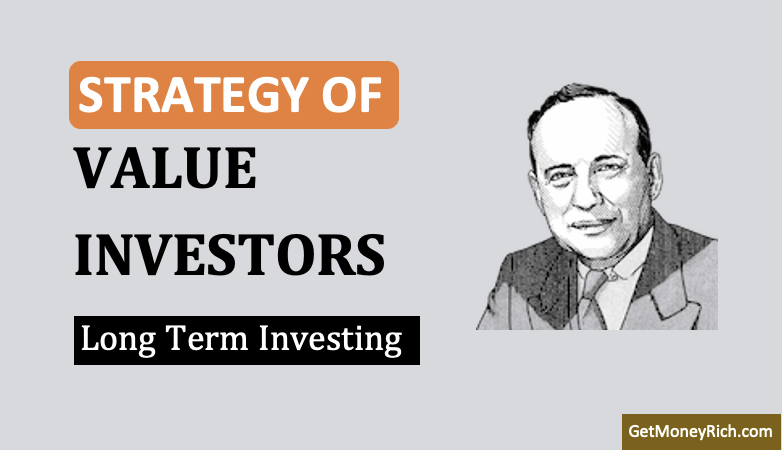The Painful Truth About Buy-and-Hold: Navigating The Long-Term Investment Strategy

Table of Contents
The Illusion of Simplicity: Understanding the Buy-and-Hold Myth
The buy-and-hold investment strategy, often associated with passive investing, suggests purchasing assets—like stocks or bonds—and holding them for an extended period, regardless of short-term market fluctuations. This seemingly straightforward approach is often lauded for its potential to ride out market volatility and benefit from long-term compounding. However, the "buy and forget" mentality is a dangerous misconception. Successful buy-and-hold requires significant upfront research and ongoing monitoring.
Before diving into any buy-and-hold strategy, thorough due diligence is paramount. This includes understanding the underlying assets, assessing their potential risks and rewards, and carefully considering your personal financial goals and risk tolerance. Simply buying and holding without a clear plan is a recipe for disappointment.
- Regular portfolio review is crucial: Your financial situation and market conditions change. Regular reviews allow for adjustments as needed.
- Market timing still plays a role, even with a long-term strategy: While you shouldn't panic-sell at every downturn, understanding broader economic trends can inform strategic decisions.
- Diversification is essential to mitigate risk: Spreading your investments across different asset classes reduces the impact of any single investment's poor performance.
- Understanding your risk tolerance is paramount: A buy-and-hold strategy can be suitable for various risk profiles, but your strategy should align with your comfort level.
Navigating Market Volatility: The Emotional Rollercoaster of Long-Term Investing
Market volatility is inevitable, and the emotional toll it takes on investors can significantly impact long-term success. Fear and greed are powerful forces that often lead to impulsive decisions, derailing even the most well-planned buy-and-hold strategies. Market downturns can be particularly challenging, leading investors to sell assets at low points, locking in losses and missing out on future gains.
- Developing a robust investment plan to withstand market corrections: This plan should include clear goals, diversification strategies, and pre-determined responses to market fluctuations.
- Strategies for managing emotional responses to market fluctuations: Techniques like mindfulness and seeking professional financial advice can help mitigate impulsive reactions.
- The importance of patience and discipline in long-term investing: Sticking to your plan during market downturns is crucial for achieving long-term success.
- Considering dollar-cost averaging to mitigate risk: Investing a fixed amount at regular intervals helps mitigate the impact of market volatility.
Adapting Your Buy-and-Hold Strategy: Responding to Changing Market Conditions
A purely static buy-and-hold approach, ignoring market shifts, can be detrimental. Successful long-term investing often involves adapting your strategy to evolving market conditions. This includes rebalancing your portfolio to maintain your desired asset allocation. Over time, some investments may outperform others, causing your portfolio to drift from its target allocation. Rebalancing involves selling some of your better-performing assets and buying more of those that have underperformed, bringing your portfolio back into balance.
- Recognizing when to adjust your investment strategy based on economic indicators: Macroeconomic factors like interest rates, inflation, and geopolitical events can significantly impact markets.
- The role of professional financial advice in adapting your strategy: A financial advisor can provide guidance based on your specific circumstances and market conditions.
- Understanding the tax implications of adjustments to your portfolio: Tax implications vary depending on the assets and the frequency of transactions.
- Considering alternative investment options to diversify further: Expanding beyond traditional stocks and bonds may provide additional diversification and risk mitigation.
Beyond Buy-and-Hold: Exploring Alternative Long-Term Investment Strategies
While buy-and-hold has its merits, it's not the only path to long-term investment success. Alternative strategies, each with its strengths and weaknesses, can be more suitable depending on your financial goals and risk tolerance.
- Value investing: Focuses on identifying undervalued companies with strong fundamentals.
- Growth investing: Prioritizes companies with high growth potential, even if they are currently trading at a premium.
- Dividend investing: Emphasizes companies that regularly pay out dividends, providing a steady income stream.
Each strategy has its own set of advantages and disadvantages. Thorough research is crucial to determine which approach aligns best with your investment goals and risk profile. Comparing and contrasting these strategies with the traditional buy-and-hold approach is essential for a well-rounded investment plan.
Mastering the Art of Long-Term Investing: Beyond the Buy-and-Hold Paradigm
Successfully navigating the world of long-term investing isn't about blindly following a buy-and-hold strategy; it's about actively managing your portfolio, adapting to changing market conditions, and maintaining emotional resilience. Thorough research, diversification, and prudent risk management are crucial elements of any successful long-term investment approach. Don't just "buy and hold"—refine your buy-and-hold strategy, optimize your long-term investment approach, and master the art of long-term investing by considering the strategies and considerations outlined above. Critically assess your current investment strategy and consider whether adjustments are needed to align with your evolving financial goals.
[Link to a relevant financial planning resource or investment calculator]

Featured Posts
-
 Siaran Langsung Moto Gp Inggris 2025 Sprint Race Pukul 20 00 Wib
May 26, 2025
Siaran Langsung Moto Gp Inggris 2025 Sprint Race Pukul 20 00 Wib
May 26, 2025 -
 Is George Russell Staying At Mercedes Toto Wolff Offers More Clues
May 26, 2025
Is George Russell Staying At Mercedes Toto Wolff Offers More Clues
May 26, 2025 -
 Hoka Cielo X1 2 0 Review Lightweight Rocker For Speedier Runs
May 26, 2025
Hoka Cielo X1 2 0 Review Lightweight Rocker For Speedier Runs
May 26, 2025 -
 Moto Gp Inggris Link Live Streaming Race Sprint Malam Ini Pukul 20 00 Wib
May 26, 2025
Moto Gp Inggris Link Live Streaming Race Sprint Malam Ini Pukul 20 00 Wib
May 26, 2025 -
 Home Invite Victory For T Bird Girls A Relay Sweep Triumph
May 26, 2025
Home Invite Victory For T Bird Girls A Relay Sweep Triumph
May 26, 2025
